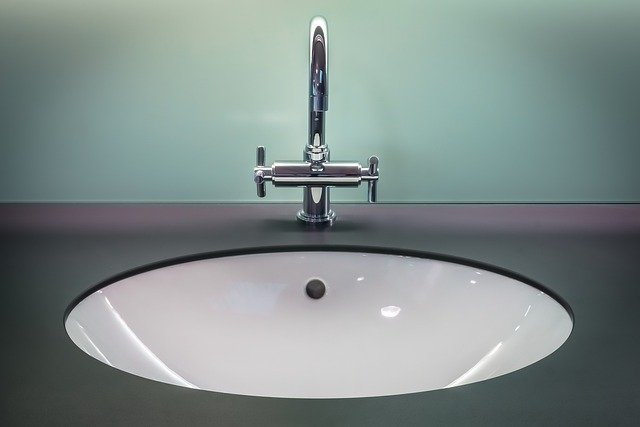Field calibration protocols for acoustic and thermal sensors
Field calibration is essential for reliable acoustic and thermal sensor performance in leak detection and infrastructure monitoring. This brief overview outlines why on-site calibration matters for water and pipeline systems, and how consistent field procedures improve data quality for mapping, diagnostics, and maintenance decisions.

Field calibration in the context of leak detection ensures acoustic and thermal sensors deliver consistent, traceable data across different conditions and deployment sites. For water and pipeline applications, field checks verify that sensors respond correctly to expected signals from flow, pressure, vibration, and thermal gradients. Protocols emphasize repeatable steps, baseline recordings, environmental logging, and verification against reference instruments so that subsurface anomalies, mapping outputs, and analytics are reliable when used for diagnostics and maintenance planning.
Acoustics calibration for pipeline monitoring
Acoustic sensor calibration in the field begins with verifying gain, frequency response, and noise floor against known standards. Technicians use calibrated sound sources or controlled leaks to generate signals across the range expected in pipeline and subsurface environments. Procedures include documenting ambient noise, coupling conditions (soil, water, or conduit contact), and sensor orientation. Regular checks of time-synchronization and sample rate ensure that mapping and vibration analysis remain consistent between surveys. Proper acoustics calibration reduces false positives and improves the confidence of localization algorithms used in diagnostics and monitoring.
Thermography calibration for surface and subsurface mapping
Thermal sensors require on-site verification of apparent temperature accuracy and emissivity settings before thermography surveys. Field protocols use reference blackbodies or known-temperature surfaces to adjust sensor calibration and account for environmental factors such as solar loading, wind, and surface wetness. For subsurface leak detection, technicians note surface temperature baselines and repeat measurements under similar diurnal conditions to avoid misinterpreting natural thermal variation. Accurate thermography supports mapping of moisture paths and helps prioritize maintenance on infrastructure where temperature anomalies indicate potential water intrusion.
Ultrasound and vibration checks for diagnostics
Ultrasound sensors and vibration transducers help detect pressurized leaks, valve issues, and mechanical faults. Field calibration includes verifying sensor sensitivity and frequency response using portable ultrasonic emitters and shaker tables or reference vibration sources. Recording baseline vibration spectra at known operating flow and pressure conditions allows later analytics to detect deviations. Protocols also specify sensor mounting torque, isolation from extraneous sources, and documentation of machine states to ensure diagnostic comparisons remain meaningful across monitoring intervals and different sites.
Flow, pressure, and analytics integration in the field
Effective calibration ties acoustic and thermal readings to flow and pressure measurements for contextual diagnostics. Field protocols require cross-checking sensor outputs with portable flow meters and pressure gauges to validate relationships used in analytics models. Calibration steps often include staged flow tests or pressure cycles to create known event signatures for algorithm training. Documenting these controlled events during mapping helps analytics teams correlate acoustic or thermography anomalies with operational parameters, improving predictive maintenance and reducing time spent on false leads.
Sensor mapping, monitoring, and maintenance procedures
Mapping and ongoing monitoring depend on repeatable calibration routines and clear maintenance logs. Field protocols define inspection intervals, pre-survey calibration checks, and post-survey verification to track sensor drift over time. Maintenance tasks include cleaning optical windows on thermal devices, replacing worn coupling pads on acoustic sensors, and confirming battery health and enclosure seals. Well-documented calibration records support infrastructure asset management by enabling trend analysis across the network and informing maintenance prioritization based on measured diagnostics rather than assumptions.
Data management, infrastructure diagnostics, and reporting
Calibration protocols extend into data handling: timestamps, metadata about environmental conditions, and reference measurements must accompany sensor outputs. Consistent metadata enables reliable mapping of subsurface anomalies and supports analytics that combine acoustic, thermography, ultrasound, flow, and pressure inputs. Reporting templates should include calibration certificate references and description of field test conditions so that diagnostics derived from the data can be traced back to known calibration states. This traceability is important for infrastructure assessments and for verifying repair outcomes.
Conclusion Field calibration protocols for acoustic and thermal sensors are a foundational element of dependable leak detection and infrastructure monitoring. By combining controlled verification procedures, cross-checks with flow and pressure instruments, careful maintenance, and rigorous data management, teams can produce consistent mapping and diagnostics for water, pipeline, and subsurface systems. Clear calibration records improve the usability of analytics and support informed maintenance and infrastructure decisions.




